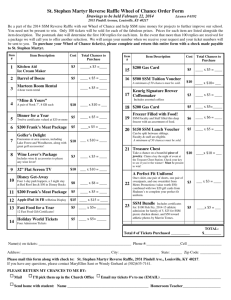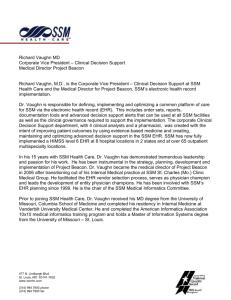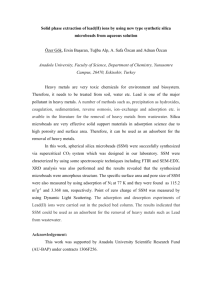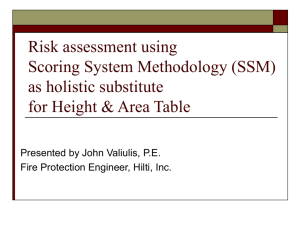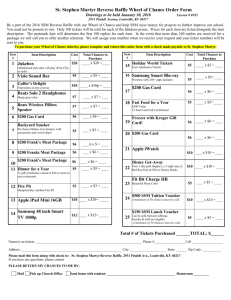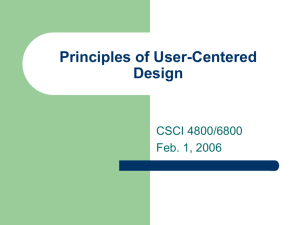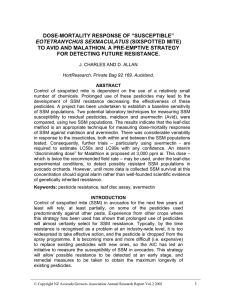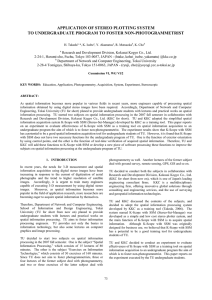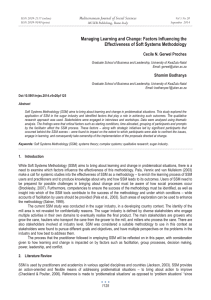W T O
advertisement
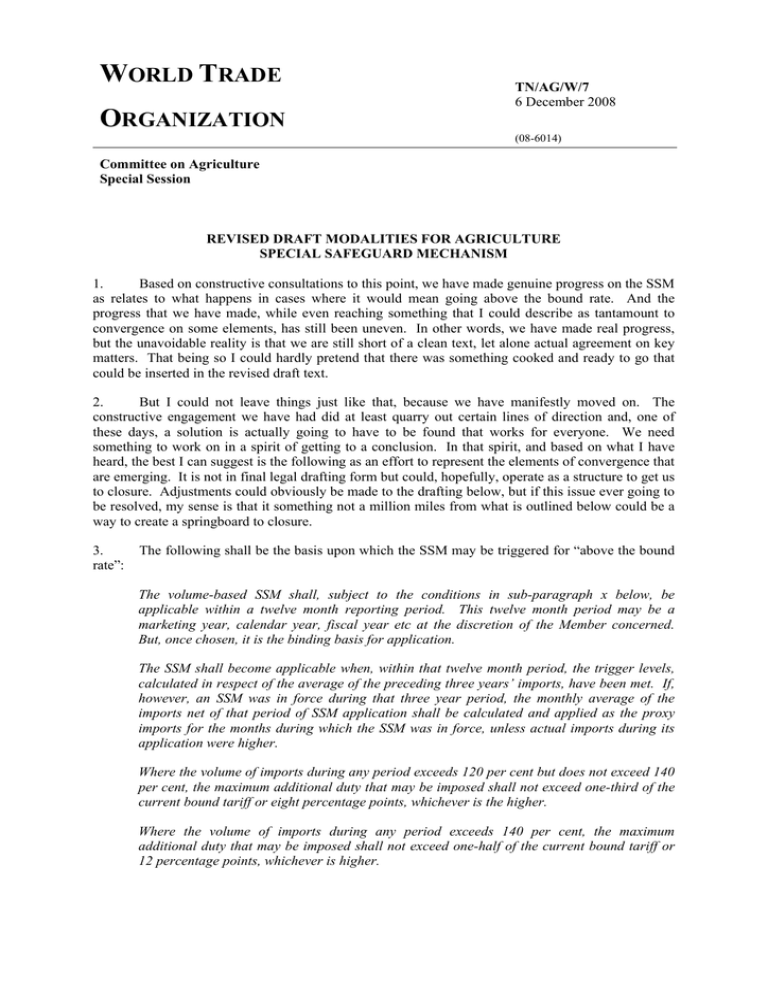
WORLD TRADE ORGANIZATION TN/AG/W/7 6 December 2008 (08-6014) Committee on Agriculture Special Session REVISED DRAFT MODALITIES FOR AGRICULTURE SPECIAL SAFEGUARD MECHANISM 1. Based on constructive consultations to this point, we have made genuine progress on the SSM as relates to what happens in cases where it would mean going above the bound rate. And the progress that we have made, while even reaching something that I could describe as tantamount to convergence on some elements, has still been uneven. In other words, we have made real progress, but the unavoidable reality is that we are still short of a clean text, let alone actual agreement on key matters. That being so I could hardly pretend that there was something cooked and ready to go that could be inserted in the revised draft text. 2. But I could not leave things just like that, because we have manifestly moved on. The constructive engagement we have had did at least quarry out certain lines of direction and, one of these days, a solution is actually going to have to be found that works for everyone. We need something to work on in a spirit of getting to a conclusion. In that spirit, and based on what I have heard, the best I can suggest is the following as an effort to represent the elements of convergence that are emerging. It is not in final legal drafting form but could, hopefully, operate as a structure to get us to closure. Adjustments could obviously be made to the drafting below, but if this issue ever going to be resolved, my sense is that it something not a million miles from what is outlined below could be a way to create a springboard to closure. 3. rate”: The following shall be the basis upon which the SSM may be triggered for “above the bound The volume-based SSM shall, subject to the conditions in sub-paragraph x below, be applicable within a twelve month reporting period. This twelve month period may be a marketing year, calendar year, fiscal year etc at the discretion of the Member concerned. But, once chosen, it is the binding basis for application. The SSM shall become applicable when, within that twelve month period, the trigger levels, calculated in respect of the average of the preceding three years’ imports, have been met. If, however, an SSM was in force during that three year period, the monthly average of the imports net of that period of SSM application shall be calculated and applied as the proxy imports for the months during which the SSM was in force, unless actual imports during its application were higher. Where the volume of imports during any period exceeds 120 per cent but does not exceed 140 per cent, the maximum additional duty that may be imposed shall not exceed one-third of the current bound tariff or eight percentage points, whichever is the higher. Where the volume of imports during any period exceeds 140 per cent, the maximum additional duty that may be imposed shall not exceed one-half of the current bound tariff or 12 percentage points, whichever is higher. TN/AG/W/7 Page 2 These remedies shall not normally be applicable unless the domestic price is actually declining. There may however be exceptional circumstances where the authorities have good reason to believe that there would be at least an imminent foreseeable decline but may lack sufficiently reliable data to be in a position to verify that robustly at the time. If so, action may be taken in such exceptional circumstances, subject to an expedited review by a standing panel of experts in the event that this is requested. In any case, in the event that reliable data is subsequently available it shall be used and, if it does not verify decline, the measure shall be rescinded. Once the SSM has been triggered, it may be applied for a maximum of [4/8] months and shall not be re-applicable thereafter until an equivalent period of months has elapsed. If the SSM is not triggered until within [2/4] months of the end of any given twelve month period it may, however, be applicable into the next 12 month period provided that this is for no more than [2/4] months and that the maximum period of application and conditionality for reapplication is also respected. The SSM shall not be applied to more than 2.5% of tariff lines in any 12 month period. 4. I feel that the above indicates elements where there has been more manifest convergence emerging and I am relatively more optimistic that the above could be used as a robust enough working structure for getting to an agreement. The area below is less well advanced because the concept of any kind of pause is still more sensitive than other matters. At this point at least, there is still not as much emergent consensus as on some other elements and it may prove to be the case that it is intractable. There are some Members who would see no need to even go here. On the other hand I cannot ignore that this area has, for other Members, proved to be an important one which is perhaps all the more so because it is perceived to be the only possible way of allaying even to a small degree anxieties about seasonality effects. I think it’s useful to at least lay out some options to help to foster convergence, if the will is there. Some would like there to be no pause. Others would like to ensure that there can be no consecutive application at all. If there is to be a compromise the following are the best I can offer. They need not be mutually exclusive: [In the event that the SSM for seasonal perishable product tariff lines is triggered and applied in two consecutive twelve month periods such that its total period of application is 12 months or more, it may not be applied in (or spill-over into) the subsequent twelve month period.] [There shall be a review after 2 years of the operation of the SSM as it applies to seasonal perishable product lines, with particular emphasis on the impact on developing country Members exports. The purpose of such a review will be to determine whether there is any disproportionate effect on seasonally traded products and, if so, to recommend ways and means to redress any such impact in a manner which is compatible with effective functioning of the SSM.] [In the event that an SSM should be applied for three consecutive twelve month periods, the standing group of experts shall, on request by an affected Member, evaluate whether or not the measure is effectively functioning as a measure to deal with import surges of an inherently temporary nature that is not disrupting normal trade or whether it is a response to an underlying more structural problem. They shall render their views and opinions including non-binding recommendations as appropriate.] TN/AG/W/7 Page 3 5. I should also note the fact that there are other matters still requiring subsequent decision. It has not been feasible to turn to such matters in any detail since July because the working priority has been to sort out the “above the bound rate” approach first. (a) Status of LDCs: Irrespective of a “general” solution, it has been the working hypothesis (no-one has objected) that LDCs will have a more flexible arrangement as was originally conceived in Rev.3, although the triggers and remedies were never settled and LDCs had sought greater flexibilities than in the Rev.3 text. (b) Status of SVEs: If there is a “general” solution found, is it to be assumed that this is applicable to all developing countries including SVEs? (c) Status of “Under the bound rate”: Consultations subsequent to July indicated that a number of Members had areas in Rev 3 that they disagreed with as regards “under the bound rate” paragraphs. But it was recognised that this could not be progressed one way or another until “above the bound rate” was resolved. It is not clear how far reaching any changes might prove to be here. __________
